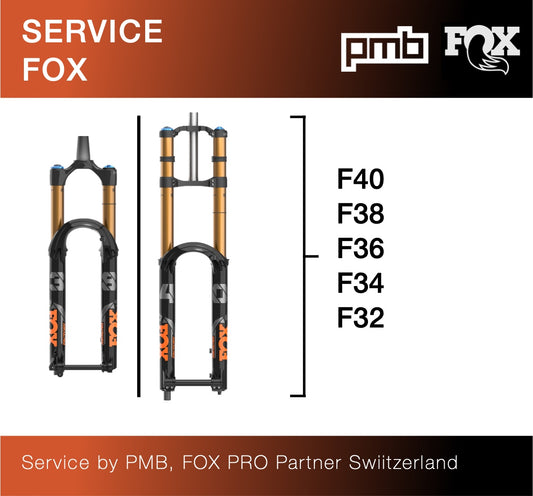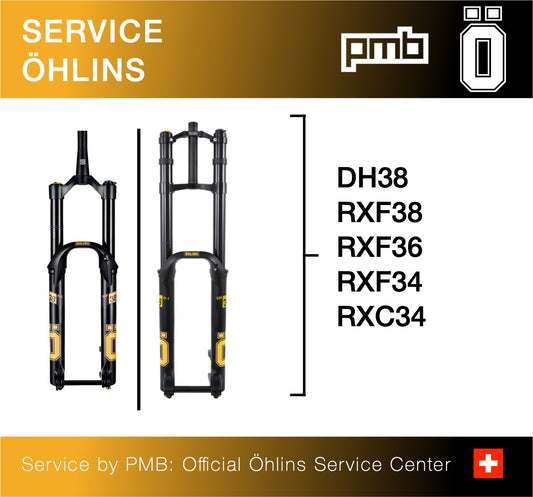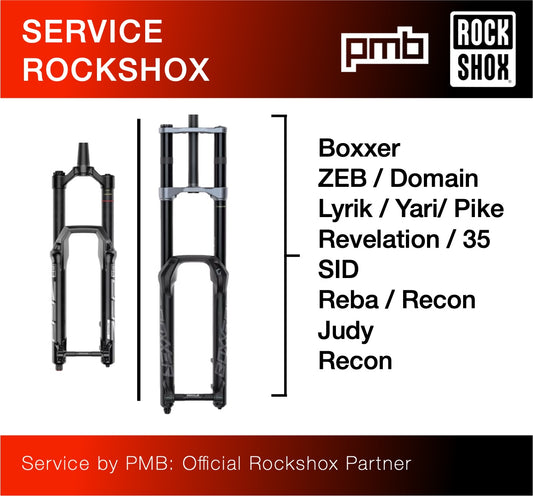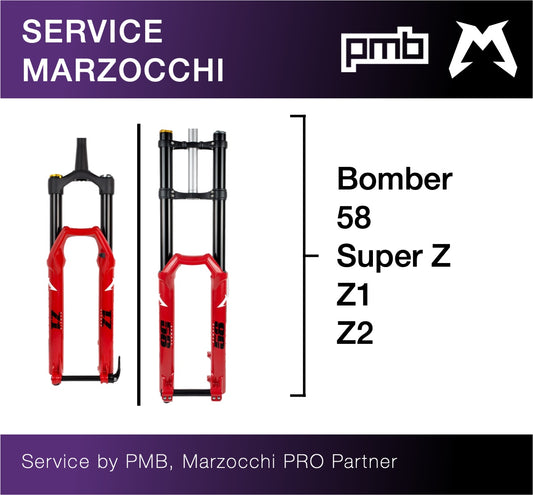MTB Fork Service with PMB
Fork services for MTB forks from Rockshox, Fox, Marzocchi, or Öhlins
Recommended every 100h of use or every year
Included:
Disassembly - new oil and grease - new seals - control of components - cleaning after service - test
Services can be ordered online (links below) or with an appointment or using the service forms
-
Fox Fork Service
Regular price From CHF 225.00Regular priceUnit price per -
Öhlins Fork Service
Regular price From CHF 245.00Regular priceUnit price per -
Rockshox Fork Service
Regular price From CHF 225.00Regular priceUnit price per -
Marzocchi Fork Service
Regular price From CHF 225.00Regular priceUnit price per
Supported DH Forks

Fox: 40, "49"
Rockshox: Boxxer 38 & 35mm
Öhlins: DH38 m.1, DH38 Race
Marzocchi: Bomber 58
Supported Single-Crown Forks

Fox:
- 32, 34, 36, 38
- Factory, Performance Elite, Performance, Rhythm
- Non-supported Fox models: TALAS and DRCV Limited Support:
- Fox 32 and 34 Evolution: due to issues with the "Evolution" damper and the limited availability of parts, full service on these forks is not possible anymore
Rockshox:
- 30mm: 30, Judy, Rudy
- 32mm: SID, Reba, Revelation, Recon, Bluto
- 35mm: Boxxer, Lyrik, Yari, Pike, SID 35, Revelation 35, Psylo
- 38mm: Zeb, Domain
Non-supported Rockshox Forks: BRAIN, RS-1
- 34mm: RXF34, RXF34 m.2, RXC34
- 36mm: RXF36, RXF36 EVO, RXF36 m.2, RXF36 EVO
- 38mm: RXF38 m.1, RXF38 m.2
- Super Z
- Bomber Z1
- Bomber Z2
Non-supported Marzocchi Forks: all Marzocchi forks released before 2018
MTB Suspension Maintenance: Keeping Your Fork in Top Shape
Keeping your mountain bike's suspension maintained is vital to keep it working, get top performance and preserver your investment. Suspension service is recommended at least once a year. Here is the details:
1. Fork Lubrication
Service Packs for Fork+Shock are also available
-
Fox Service Pack
Regular price From CHF 445.00Regular priceUnit price per -
Öhlins Service Pack
Regular price From CHF 485.00Regular priceUnit price per -
Rockshox Service Pack
Regular price From CHF 425.00Regular priceUnit price per -
Marzocchi Service Pack
Regular price From CHF 465.00Regular priceUnit price per








